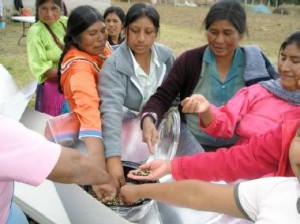
SHE Backgrounder
Daunting Global Challenges
The need for alternatives to traditional household fuels such as wood and charcoal has become critical with rapid population growth and the unsustainable consumption of natural resources. Consider the following:
- According to the World Health Organization, every 20 seconds someone dies from the effects of inhaling smoke from wood cooking fires. It is the biggest killer of children under five in the developing world, and a key cause of respiratory infections, glaucoma and lung cancer.
- According to the UN Food and Agriculture Organization, one half of today’s estimated two billion users of wood energy face fuel shortages as supplies dwindle.
- As wood becomes scarce, women and children must venture far from home to forage, consuming time that otherwise could be spent on income generating activities or attending school.
- Carrying heavy loads of wood causes head, neck and back injuries.
- The burning of traditional fuels is a major cause of environmental degradation and atmospheric pollution.
The Sun’s Simple Solution
While cooking with the sun full-time is impossible, it can significantly reduce use of traditional fuels. Unlike cooking over a fire, which requires frequent stirring to prevent burning, solar ovens seldom need adjustment, and the sun’s energy is free.
Numerous solar cooking projects in the past few decades have shown cultural acceptance ofsolar cooking, particularly in developing countries. For example:
- An evaluation of 180 Somali refugee families provided with solar cookers found that 94.3% continued to use the devices on a long-term basis, in combination with other cooking methods. Exclusive use of wood-burning stoves dropped from 75% to 3%.
- An evaluation of a Bolivian solar cooking promotion project found that more than 95% of participants continue to use their solar cookers years after their initial training.
Solar Household Energy’s Role
 Founded in 1998, Solar Household Energy promotes solar cooking technology globally in areas of need and appropriate climate. Our vision is that solar cooking becomes a significant, if not primary, means of cooking in developing countries, thereby contributing to improvement of health, the environment and economic security.
Founded in 1998, Solar Household Energy promotes solar cooking technology globally in areas of need and appropriate climate. Our vision is that solar cooking becomes a significant, if not primary, means of cooking in developing countries, thereby contributing to improvement of health, the environment and economic security.
We have developed a breakthrough solar cooker – the “HotPot” — based on research and field experience, and designed by solar scientists and engineers. It combines efficiency, durability, ease of use, portability, and commercial viability with low cost. Under a tropical sun it can cook rice in under an hour, a chicken in about two hours, and beans in four hours.
Our Solar Cooking Campaign
With distribution mechanisms already established in Mexico and Mali, we are currently developing Solar Cooking Initiatives in El Salvador, Guatemala, Senegal, Burkina Faso, Cameroon and Kenya to achieve a “tipping point” of general acceptance that will inspire further distribution of solar cooking technology.
To introduce this technology, Solar Household Energy partners with NGOs, entrepreneurs and governments. We facilitate the delivery of solar cookers, demonstrate their use, organize promotions, and train local women to be instructors. We insure that credit programs are in place to enable the purchase of HotPots. Where necessary, we also contribute to the funding of programs.
 In each community targeted for HotPot distribution, we begin with six-to-twelve month pilot programs involving 50 to 100 families. This enables us to adapt to local realities. It also exposes the advantages of cooking with the free fuel of the sun to the wider communities. The second step is a scale-up engaging 250 families or more.
In each community targeted for HotPot distribution, we begin with six-to-twelve month pilot programs involving 50 to 100 families. This enables us to adapt to local realities. It also exposes the advantages of cooking with the free fuel of the sun to the wider communities. The second step is a scale-up engaging 250 families or more.
Finally, we monitor and evaluate our solar cooking programs for evidence of savings in fuel consumption, money and time as indicators of success.
This attention to detail is essential to the ongoing achievement of our goal of harnessing the vast and free power of the sun to add quality to life and relieve stress on the environment.



